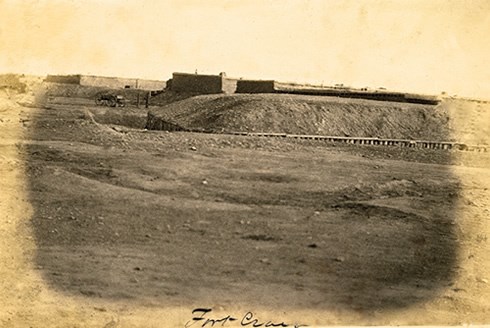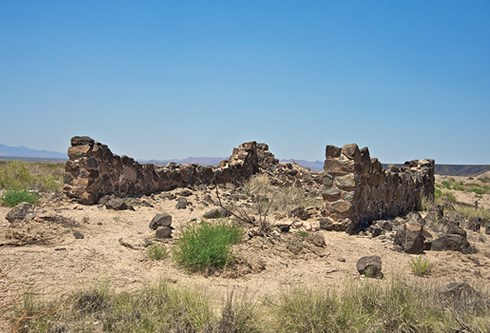Last updated: July 2, 2020
Article
New Mexico: Fort Craig
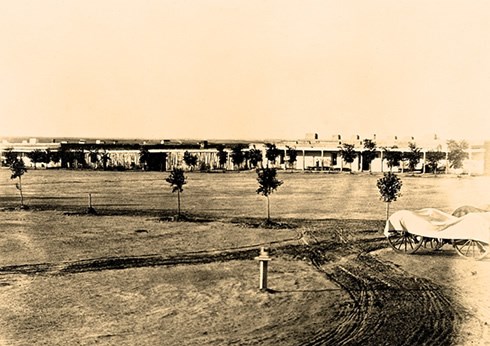
The gritty crunch of footsteps on gravel, a dull desert buzz and the gentle flap of an American flag inspire a visitor to imagine the ghostly Fort Craig as a fully occupied U.S. Army garrison on the middle Rio Grande route of El Camino Real de Tierra Adentro.
For a short time during the early months of 1862, nearly 4,000 troops lived, worked and socialized at the sprawling stone-and-adobe complex set against the rugged outlines of the San Mateo and Magdalena Mountains. Today, Fort Craig is a lonely desert outpost whose sun-bleached ruins stand like watchmen of the memory of the fort’s 30 years defending the New Mexico Territory and protecting wayfarers on El Camino Real, known then as the Chihuahua Trail.
Located on the west bank of the Rio Grande, 35 miles south of Socorro, Fort Craig was built in 1854 to replace Fort Conrad, nine miles to the north. The mesa lands where the new fort was constructed were once home to the Piro Indians, the southernmost of the Pueblo tribes who abandoned their communities at the time of the 1680 Pueblo Revolt. The U.S. expansion of the western frontier that followed the Mexican-American War drew waves of emigrants to the region, garnering resentment from Native communities for encroaching on their lands. Fort Craig’s mission was to safeguard from Apache, Navajo and Comanche raiders the settlers attracted to the area’s prime agricultural, mineral, grazing and hunting lands, as well as traders and trekkers on El Camino Real.
The fort sat across the river from, and at the northern edge of, the forbidding Jornada del Muerto, a dry and dangerous stretch of El Camino Real that tested the true mettle of travelers between El Paso del Norte and Santa Fe. Weary voyagers who survived the so-called Journey of the Dead Man stopped for water and rest near Fort Craig before continuing to the territorial capital and other destinations on El Camino Real’s north-south path. Northbound travelers funneled their livestock through a narrow passage between the river and a towering volcanic mesa northeast of Fort Craig. From the mesa above, now known as El Mesa Contadero (Counter’s Mesa), a party member tallied how many livestock had withstood the desert trek.
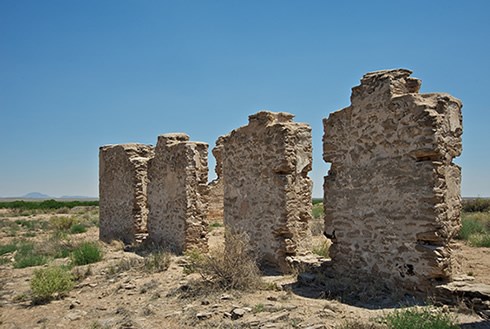
Built as both a military fortress and a self-contained community, Fort Craig had everything from officers’ quarters, storehouses and horse stables to a hospital, sutler’s store, blacksmith’s shop, carpentry shop and more. Despite the fort's isolation and mostly monotonous daily life, its cottonwood-studded setting and mountainous horizons were popular with troops. Officers’ children attended school on site and enlisted men’s wives worked as laundresses. Among the infantry and cavalry units who lived there were African American members of the Buffalo Soldiers who, despite their legendary service to their country, endured the stigma of a still-segregated frontier army.
The fort became famous early on as soldiers undertook vigorous campaigns against the Apaches, Navajos and Comanches, trapping and capturing them in the depths of the Jornada del Muerto, and rescuing Indian hostages and stolen livestock. Under the fort’s watchful eye, such settlements as San Marcial to the north and Paraje to the south flourished as centers of El Camino Real trade. With the launch of the Civil War in April of 1861, the fort’s strategic El Camino Real location put it squarely on the path of battle, and in the annals of history, as part of the first and largest conflict of the Civil War in the West.
With the Confederate capture of Fort Fillmore and other southern New Mexico military stations, General Henry Hopkins Sibley led 2,600 Texas Confederate troops up El Camino Real toward Fort Craig and 1,000 Union troops. Union Colonel Edward R.S. Canby called hundreds of volunteer militia troops to Fort Craig for assistance, including the mostly Hispanic 1st New Mexico Volunteers commanded by Colonel Kit Carson. By early 1862, the number of troops serving at Fort Craig had surged to become among the largest in the chain of military posts that spread across the Indian country of the West. Now 3,800 strong, the troops fortified the garrison with earthen ramparts, a perimeter moat and bombproof subterranean supply houses, and positioned both real and fake cannons to intimidate the advancing rebels.
Realizing that chances of a successful direct assault were slim, Sibley and his men attempted to bypass Fort Craig, changing course off El Camino Real, going around Black Mesa to the east, and heading north through the lush Rio Grande tablelands. Canby and Company caught up with them at Valverde, a riverside paraje (rest stop) on El Camino Real, and on February 21, 1862, the troops clashed. After a bloody daylong battle, Sibley triumphed with fewer losses and forced a Union retreat back to Fort Craig. The burning of Confederate supply wagons, however, left him with few provisions and a fully intact Union fort at his back. Moving north along El Camino Real, his troops took Albuquerque and Santa Fe before finally being defeated at Glorieta Pass. The Confederate quest for control of the West ended as Sibley and his troops retreated to El Paso via El Camino Real.
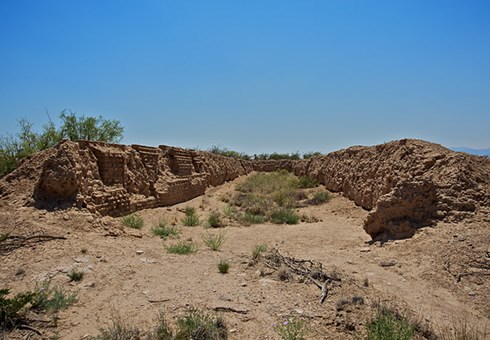
Battle for the control of Indian country resumed with Fort Craig once again on the front lines. During the next decade, the fort was pivotal in the pursuit of such notable Apache leaders as Victorio, Geronimo and Nana. While Victorio died in a Mexican ambush, Geronimo and Nana surrendered in 1885 after seeing their homelands decimated and their peoples forced onto reservations.
By then, El Camino Real traders were largely devoted to supplying military forces in the region. With the arrival of the railroad, El Camino Real, like Fort Craig, no longer served a vital function. The fort was permanently abandoned by 1885.
Today, the Bureau of Land Management owns and operates Fort Craig as a year-round destination for hiking, photography, picnicking and self-guided tours. Like many stops on El Camino Real, the site is perhaps as much a vicarious experience as a physical experience, but that makes it no less engaging. The indistinct outlines and crumbling masses of the fort’s fallen buildings provide an artfully pleasing abstraction of the past while a flagpole replicating the fort’s original keeps the American flag flying high. Wandering through the empty fort, visitors are free to create their own vision of life in the middle of the Indian Wars, the Civil War or El Camino Real.
Fort Craig is located 35 miles south of Socorro, NM. The area has picnic facilities, interpretive signs, restrooms and drinking water. Interpretive signage is posted along a lengthy self-guided tour trail, though gravel may make wheelchair access difficult. For more information, visit the City of Socorro website.
Fort Craig and the Civil War in New Mexico are featured on the National Park Service’s El Camino Real de Tierra Adentro website.
Explore more history by visiting the El Camino Real travel itinerary website.
